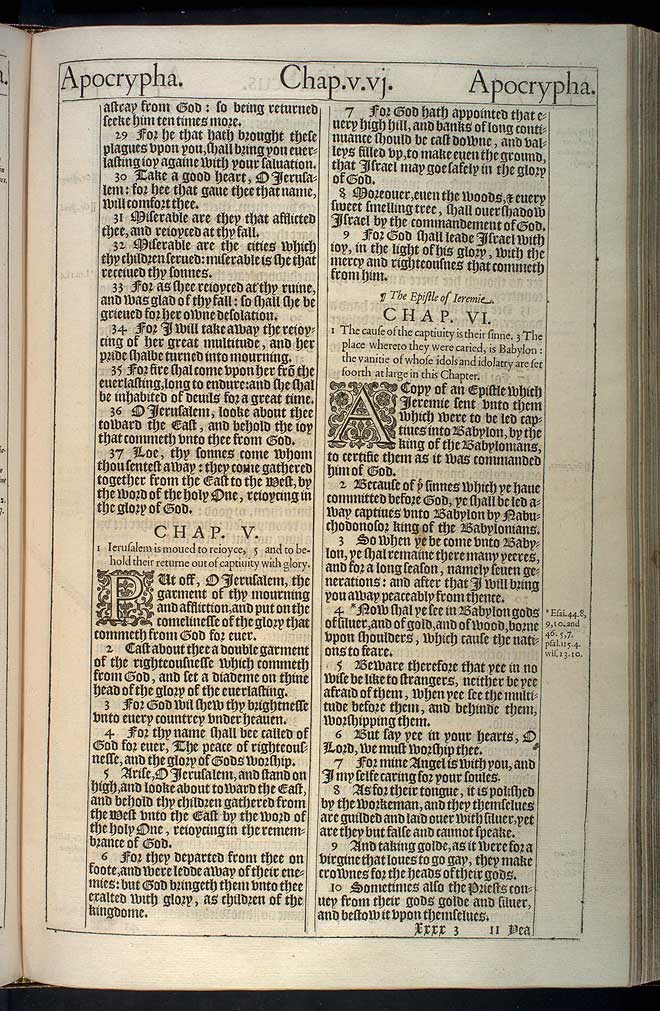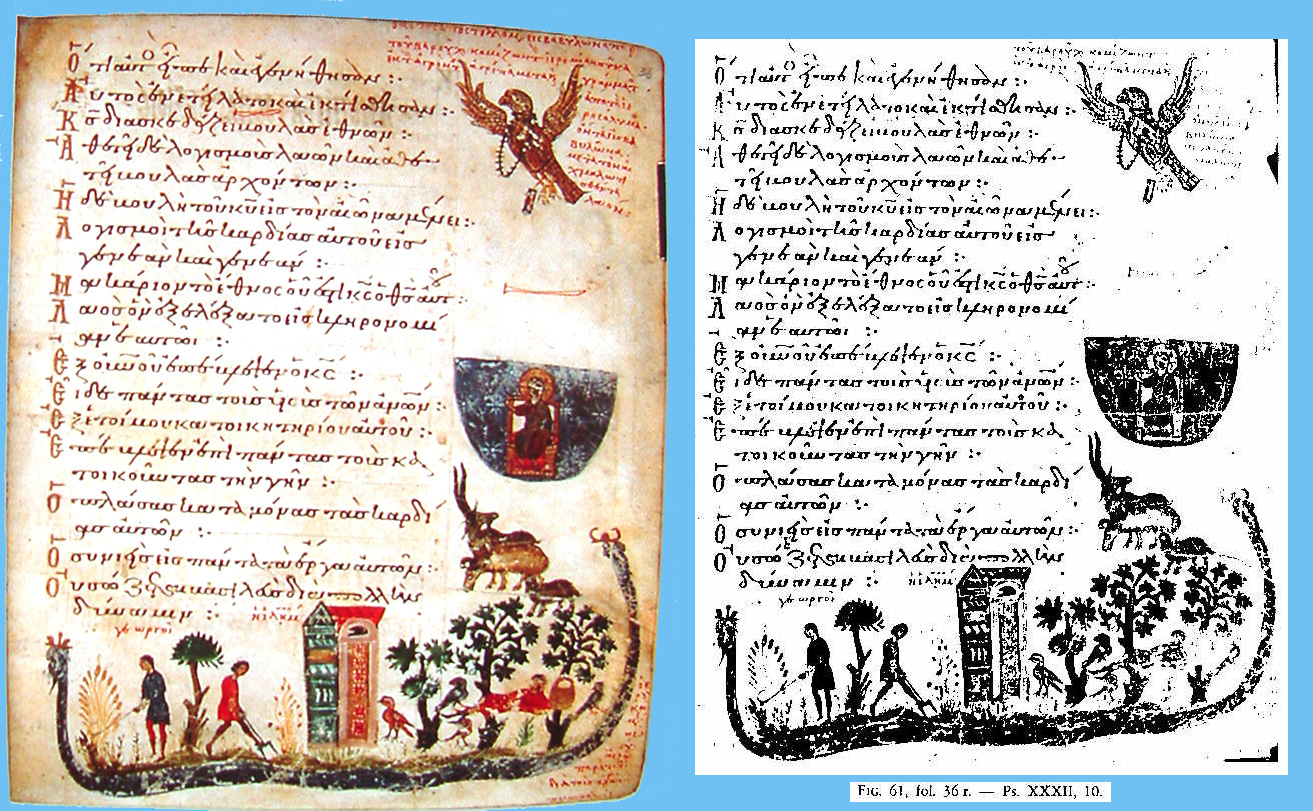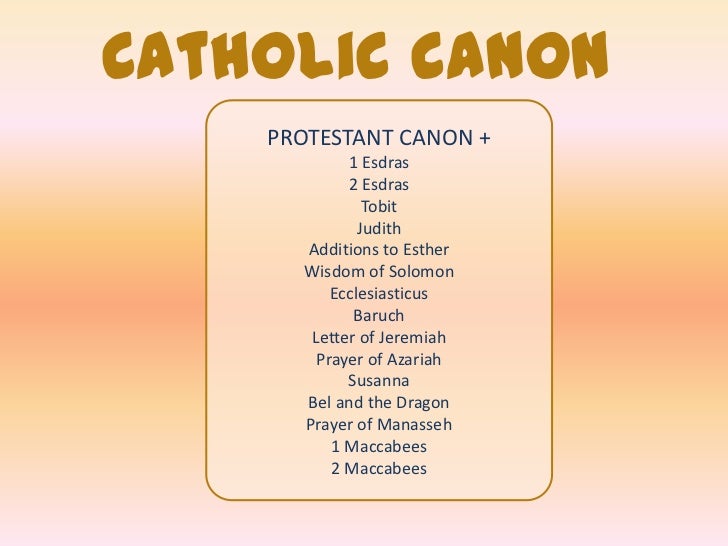Letter of Jeremiah
- Isaiah
- Jeremiah
- Lamentations
- Baruch including letter of Jeremiah
- Ezekiel (Ezekiel )
- Book of Daniel ( accessories)
- Hosea
- Joel
- Amos
- Obadiah
- Jonah
- Micha
- Nahum
- Habakkuk
- Zephaniah
- Haggai
- Zechariah
- Malachi
The Letter of Jeremiah is an originally independent, traditional Greek font of Palestinian Judaism. The oldest known fragment thereof ( 7Q2 ) dates from the 1st century BC and was among the scrolls from the Dead Sea ( Qumran ) discovered.
Position in the Christian Bible canon
The letter was followed in the Greek Septuagint to the Lamentations of Jeremiah and was in the Latin Vulgate as the sixth chapter of the resulting approximately 100 years later the book Baruch - to which he has no formal and substantive relationship - in the canon of the Old Testament, but not in the canon of the Hebrew Tanakh recorded. He is one of those Jewish apocrypha which are not included in all editions of the Bible of Christianity.
Content
The treatise was written as Pseudoepigraph to Jeremiah and adopt its introduction as a statement of this prophet of the Babylonian exile Jerusalem Jews deported Jews. Thus, he concludes formally on the traditional in Jer 29 EU correspondence.
Because of their sins God had led the Jews to Babylon, where they would remain " for a long time, up to seven generations " (6.2 EU). There they would " see images of the gods of silver, gold and wood, which is worn around the shoulders and inspire the peoples fear." But they should not let them take, but the first bid eighth (6.5 f EU): "When you see how the amount prostrates before and behind them; speak rather in the heart: Lord, you alone deserves worship. For my angel is with you; he will watch over your life. "
The next major part warns the deportees - in fact, so its for a good 400 years resident in the Babylonian Diaspora community descendants - before the fall to the shiny, outwardly superior foreign deities of the Babylonian cult. He uses ten interconnected by keywords sections sarcastic polemic against the Babylonian gods, which he derided as ineffective, to helping disabled idols; yet he calls again and again to them not to be afraid and to give no faith their alleged divinity. All these gods, it is argued in detail, are powerless and perishable works of people who could with their non-existence of harm nor good. The letter concludes with a kind of " morality" ( 6.68 to 72 EU): "So, we in no way clear that they are gods [ ... ]. So Better is a righteous man who has no images of the gods, for he is safe from the ridicule. "
He updated the biblical prohibition of images against the then well- acute challenge of Hellenism with its cultural pluralism and syncretism. He includes language and content in on biblical Götzenpolemik as in Isaiah 44:9-20 EU, 46.5 ff EU and Jer 10:1-16 EU, but also in the Psalms, Ps 115.4-8 and EU 135 15-18 EU was preformed. This polemic has influenced other Jewish writings such as the Letter of Aristeas, the Book of Jubilees, and some writers of the New Testament. Bodies such as the EU Rom 1-3, 1 Thess 1.9 EU, 1 John 5:21 and Acts 14:15 EU EU may require that the letter Jeremiah was known to the early Christians.










